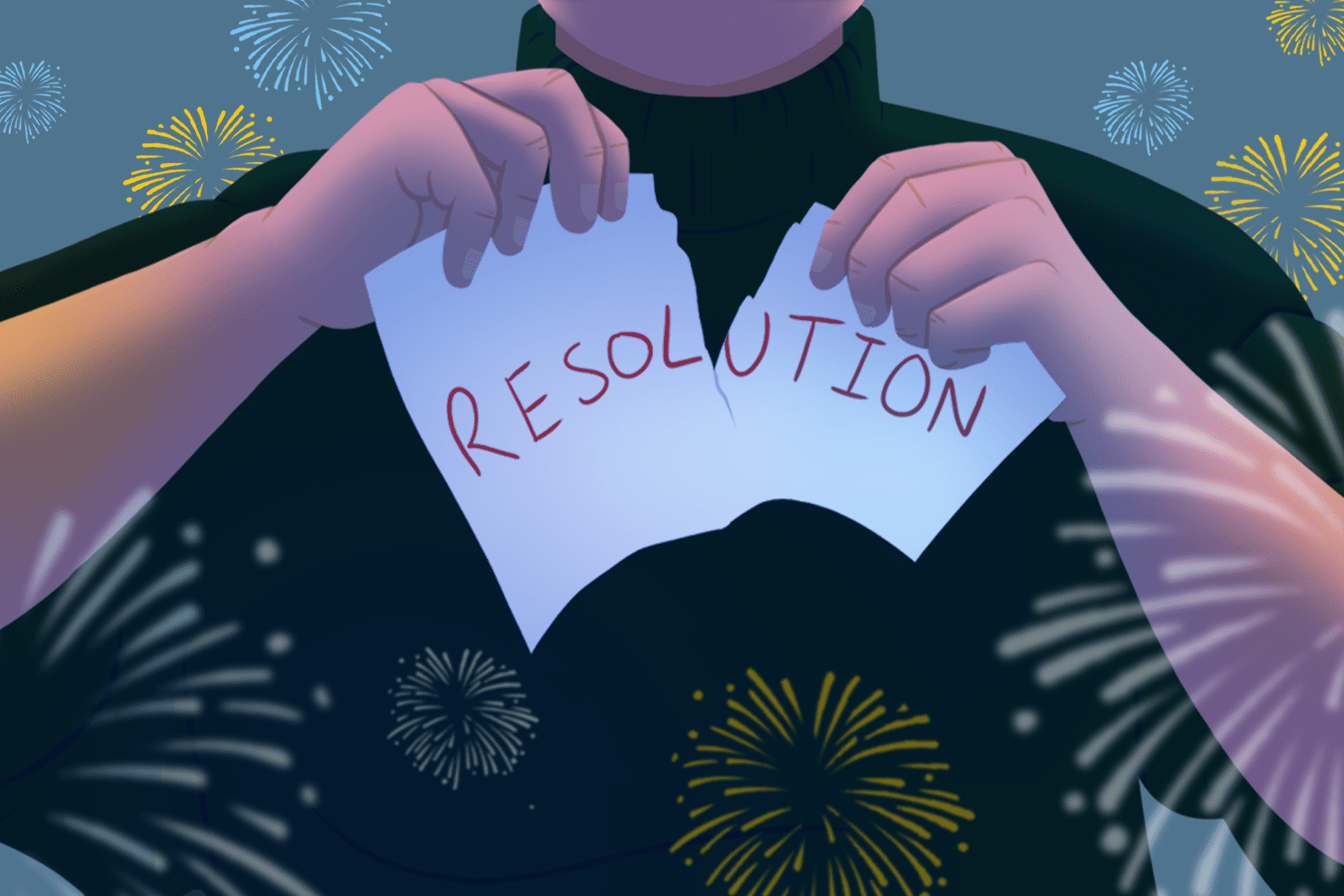If you do one thing in 2024, miss making a resolution. Normal fitness and nourishment brands advertise a “New Year, New You” (cringe) or a “New Year, Better You,” however we’re confident that you don’t need a rebrand. The resolution does.
Why are Resolutions Over?
The social conversation has altered, and it seems that lots of people are no more curious about making sweeping resolutions or dedications that end in broken self-promises. If you wish to make an adjustment in your life, you do not need to wait till January first. On a daily basis offers the chance to make small, favorable modifications in your life.
Since Verywell Fit is rooted in science, we took a better check out numerous information indicate identify why the belief bordering resolutions has transformed. Below’s what we discovered.
Resolutions Are No Longer Trending
Although resolutions when controlled water cooler talk and table discussions, they don’t appear to be a fad in conversation anymore. In fact, Google fad research study reveals that the look for “New Year’s Resolutions” handed over a significant high cliff in 2016 and continues to fall. Case in factor: The interest in 2021 was approximately 1/4 of what it remained in 2016. It shows up people are no more wanting to the net to inform them what they need to alter.
Resolutions Are Made to Be Broken
Information shows that most resolutions are made to be broken. For those that do make resolutions, very couple of maintain them. According to a Marist poll, approximately 50% of U.S. adults who made resolutions from 1995 to 2019 really maintained them.
This leads us to assume: why would certainly you make a guarantee to yourself that you end up splitting, particularly if the likely result is disappointment (and some self-loathing)? Why would certainly you feel urged to set your aim on a goal when your chances of attaining it are so reduced?
For Those That Intended To Make Resolutions, Wellness and Happiness Are Key
Even if the information does not sustain resolutions functioning, we will certainly still sustain those who wish to make them (we see you, GenZ). Actually, according to the most recent Economist/YouGov Survey, 2 in 5 more youthful grownups planned to make resolutions in 2022. Of those, 23% wished to “live healthier” and 21% desired “personal enhancement or happiness.”
The continuous string, or main takeaway, below is the wish for positive lifestyle adjustments. That’s what Verywell Fit is everything about. However, we’ve discovered that in order to make long lasting favorable lifestyle modifications, people normally need tailored objectives with clear, actionable, small actions.
Resolutions May Bolster Diet Culture
In our point of view, the phrase “New Year’s Resolution” screams reduce weight, exercise more, and you’re insufficient as is. It naturally stands for whatever that Verywell Fit has actually made a conscious initiative to tip far from.
Last year, Verywell Mind executed a survey that showed that New Years’ Resolutions boost how often people stressed or really felt adversely about how their bodies looked. In fact, among those that really felt negatively regarding their body, nearly one in 5 people cited New Years’ Resolutions as aggravating their struggle with body image. It’s interesting to explain that the very same survey revealed that the youngest Americans, that we know are additionally most likely to make resolutions, are most likely to have unfavorable assumptions of their bodies.
What’s the Distinction Between Resolutions, Routines, and Objectives?
A resolution is taken into consideration a firm choice to do or not do something. It’s uncompromising and extremely uncompromising. While the objective is clear, the limiting nature of resolutions is limiting and typically ends in gauging either success or failure.
A behavior is a regular technique. Habits, whether great or bad, intentional or unintentional, are essentially repeated sufficient times to end up being automatic.
A goal is the preferred outcome, which normally requires repetitive habits (routines) to achieve. It is essential to set apart a practice from a goal. Temporary objectives, as soon as accomplished, can end up being a habit.
It’s likely that social media perpetuates these feelings of adverse body image, and maybe fuels, the requirement to produce life-altering resolutions. The term “resolution” and the media surrounding this hashtag on social systems suggest that you need to do penance for any kind of weight obtained during the holidays or exercises missed in favor of social interactions. At Verywell Fit, we urge you to indulge mindfully and take remainder when you need it.
What Are We Focusing on Rather?
This solution is straightforward: decreasing, encouraging mindfulness, and customizing our goals to where we are now to obtain where we want to be. We’re looking at health and wellness through a various lens.
If reducing weight is your goal, avoid the scale and gauge your “progress” by just how you really feel. Pick exercise that feels great to your body rather than just including “exercise” to your daily checklist. Find purpose in your activities and focus on building solid habits. It’s the small adjustments that build up with time.
We understand, we know … this is less complicated stated than done. Theoretically, a slower approach to achieving objectives via behavior modification works. However what concerning in reality? In all fact, not one technique benefits everyone, and it might take some experimentation to determine what works for you.
Be confident in the reality that science does sustain the shift from limiting resolutions to small behavior modifications in order to achieve your goal.1.
Why a Routine Rather Than Resolution? Aren’t They the Same Thing?
Resolutions and routines are not compatible. Why does this issue? The adaptable, liquid, changeable, and much less limiting nature of utilizing routines in fact functions, also if it may take much longer. Verywell Mind editor-in-chief, Amy Morin encourages that “Resolutions often aren’t measurable. Individuals claim things like ‘I wish to get much healthier,’ or ‘I wish to be happier.’ Yet those are obscure ideas and you can not truly tell if you’re making development.”.
Morin includes, “Resolutions are often too large. People intend to lose a lot of weight or settle a lot of financial obligation and they offer themselves a year to do it. Then, they delayed dealing with those objectives because there aren’t any kind of short-term purposes.”.
We agree that shorter, extra reasonable goals are the ones to set your sights on. While making solid, regular habits is difficult, proof shows that you will be more likely to accomplish your objectives by taking smaller sized steps as opposed to executing impractical, sweeping modifications.1.
Resolutions are frequently also huge. People intend to shed a great deal of weight or settle a lot of financial obligation and they give themselves a year to do it. Then, they put off working on those goals because there aren’t any short-term purposes.
— AMY MORIN, LCSW.
Exactly how to Shift to Strong Routines This Year.
If you intend to build solid behaviors to accomplish your objectives, comply with these steps:.
Choose a Goal.
Determine Your Why.
Make Your Goal SMART.
Carry Out Small Habit Adjustments.
Select an Objective.
Resolutions commonly result in an overarching objective. With routine change, you can attain the same goal that you were going for, yet the technique will certainly be various.
Select a long-lasting goal that you really feel will certainly include in your life in a favorable way. An instance of an usual goal is “ending up being much more energetic.”.
In theory, you can make a resolution to go to the fitness center five days a week at 6 am. While this may work for a short amount of time, it’s likely unsustainable, and after a couple of days of oversleeping or ill children, you might quit. Rather, attach to a much deeper inspiration and establish a clear course.
Recognize Your Why.
Resolutions are greatly driven by self-control. When that willpower subsides, or a stimulation distracts you from the goal, poof! Say sayonara to your resolution.
Instead of depending on sheer determination alone, identify a really clear, inspiring force, or “why,” to drive practice adjustment. This inspiration will sustain you throughout times that feel difficult, and you might be more likely to achieve your objective if there is a much deeper connection throughout outcome.
What should your “why” be? That’s an inquiry that only you can answer. There is no person right “why.” It will certainly be various for everybody. It ought to be fairly straightforward to address.
Your goal is to be much more active? Ask on your own why. What’s the first point that comes to mind? Probably you intend to stay on par with your grandkids. Alternatively, you intend to feel your greatest, emotionally and physically. Internalize that inspiration, and also consider composing it down.
Morin includes, “When I understand something is mosting likely to be difficult to do, I jot down a list of reasons why I should do it. Then, when I do not seem like doing it, I review over the checklist and it inspires me to keep going.” Continuously– and constantly– connecting to your “why” is a terrific means to make certain that your inspiration remains.
Make Your Goal SMART.
As soon as you identify the motivating element behind your overall objective, usage SMART objectives to focus in on a details and quantifiable course to achieving it.
If you’re not familiar, the clever phrase represents:.
Certain: Your goal requires to respond to the concerns: Who? What? Where? When?
Quantifiable: Add time and any appropriate measurements. Gauging an objective makes it easier to track progression and identify any kind of locations that you might need assist with.
Obtainable: Start where you are. It’s wonderful to assume large (please do!), but setting an objective that is within your reach during a particular timespan (while pushing you a little out of your convenience area) is much more sensible.
Pertinent (and practical): Make sure that your objective lines up with your why.
Time-bound: Develop a target date or certain duration.
Allow’s look at the “ending up being extra active” example that we mentioned earlier. This is an open-ended goal. To make it clever, you may wish to simplify right into smaller sized, extra actionable goals. For example, probably you want to walk a specific range every week, exercise for a certain variety of minutes every day, log a certain number of steps, or compete in an organized race.
If running a 5K is a sensible goal for you, make a wise objective to get there. An example of a clever objective for a seasoned runner might be, “I will run a sub-30-minute 5k race in May 2024 by following an 8-week training plan.”.

Apply Small Routine Changes.
Little habits add to big adjustments over time. “Begin small” may appear like ordinary, ineffective advice, but the additive nature of little habits is undeniable, and you can make use of these routines to attain your SMART objective gradually.
Whether it’s preparing your breakfast or lunch for the next day prior to you go to sleep, journaling for two mins when you get up, or consuming alcohol a glass of water before a cup of coffee, each favorable routine can work in the direction of a bigger end goal.
For the runner wishing to complete a sub-30-minute 5k race, incorporating rate job once per week may be a small change, just as everyday recovery methods may be an additive change. An instance of a favorable practice to assist achieve this objective is active stretching for 5 mins after each workout to boost flexibility and muscle recovery while lowering the danger of injury.
Once you’ve adopted a few small, positive habits, you’re most likely to produce long lasting adjustment. While habit modification is also highly individualized, below are a couple of instances of little practices that can function towards larger goals.
If you intend to:.
Get Energetic: Arrange (essentially block) 10 mins of your day to take a walk, use an app to take a yoga course, or move in any type of means that really feels right for you.
Enhance Your Nourishment: Select at the very least one night per week that you prioritize food preparation in the house.
Reduce Weight: Beginning by including one nutritious snack such as simple greek yogurt with berries to your mid-day. This might prevent you from coming to be excessively starving at dinnertime.
Be Extra Conscious: Execute a five-minute guided reflection on an app while you are travelling.
These little changes can become significant when duplicated with time. Consider joggers that educate for marathons. They constantly commit time, energy, and effort to place in miles upon miles of technique. Joggers commonly follow a details, time-bound training plan that slowly develops over time, similar to a habit, to ensure that what might feel unattainable in the beginning (26.2 miles) is eventually accessible.
Get ready for Problems and Top Priority Changes.
Paths to achieving behavior adjustment are hardly ever direct. Get ready for problems and roadblocks. “Making mistakes is part of the procedure,” Morin recommends. “So when you skip a couple of days at the health club or eat greater than you meant, do not proclaim on your own a failure. Speak with on your own with self-compassion and use it as an opportunity to get more information regarding yourself and how you can do better progressing.”.
Understand that habit adjustment is difficult. And, while consistency is crucial, it’s not always realistic. When you wander off from your plan, get right back to it or identify a brand-new path ahead.
Similarly, objectives change. Don’t be tough on yourself if you’ve made it midway yet seem like you wish to go in a various instructions. As an example, if you were intending to complete in a 10K race, but that suddenly feels like too much, attempt the 5K.


